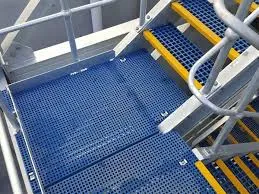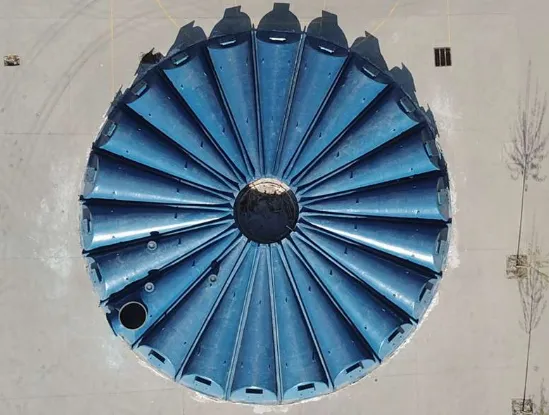
-
 Afrikaans
Afrikaans -
 Albanian
Albanian -
 Amharic
Amharic -
 Arabic
Arabic -
 Armenian
Armenian -
 Azerbaijani
Azerbaijani -
 Basque
Basque -
 Belarusian
Belarusian -
 Bengali
Bengali -
 Bosnian
Bosnian -
 Bulgarian
Bulgarian -
 Catalan
Catalan -
 Cebuano
Cebuano -
 China
China -
 China (Taiwan)
China (Taiwan) -
 Corsican
Corsican -
 Croatian
Croatian -
 Czech
Czech -
 Danish
Danish -
 Dutch
Dutch -
 English
English -
 Esperanto
Esperanto -
 Estonian
Estonian -
 Finnish
Finnish -
 French
French -
 Frisian
Frisian -
 Galician
Galician -
 Georgian
Georgian -
 German
German -
 Greek
Greek -
 Gujarati
Gujarati -
 Haitian Creole
Haitian Creole -
 hausa
hausa -
 hawaiian
hawaiian -
 Hebrew
Hebrew -
 Hindi
Hindi -
 Miao
Miao -
 Hungarian
Hungarian -
 Icelandic
Icelandic -
 igbo
igbo -
 Indonesian
Indonesian -
 irish
irish -
 Italian
Italian -
 Japanese
Japanese -
 Javanese
Javanese -
 Kannada
Kannada -
 kazakh
kazakh -
 Khmer
Khmer -
 Rwandese
Rwandese -
 Korean
Korean -
 Kurdish
Kurdish -
 Kyrgyz
Kyrgyz -
 Lao
Lao -
 Latin
Latin -
 Latvian
Latvian -
 Lithuanian
Lithuanian -
 Luxembourgish
Luxembourgish -
 Macedonian
Macedonian -
 Malgashi
Malgashi -
 Malay
Malay -
 Malayalam
Malayalam -
 Maltese
Maltese -
 Maori
Maori -
 Marathi
Marathi -
 Mongolian
Mongolian -
 Myanmar
Myanmar -
 Nepali
Nepali -
 Norwegian
Norwegian -
 Norwegian
Norwegian -
 Occitan
Occitan -
 Pashto
Pashto -
 Persian
Persian -
 Polish
Polish -
 Portuguese
Portuguese -
 Punjabi
Punjabi -
 Romanian
Romanian -
 Russian
Russian -
 Samoan
Samoan -
 Scottish Gaelic
Scottish Gaelic -
 Serbian
Serbian -
 Sesotho
Sesotho -
 Shona
Shona -
 Sindhi
Sindhi -
 Sinhala
Sinhala -
 Slovak
Slovak -
 Slovenian
Slovenian -
 Somali
Somali -
 Spanish
Spanish -
 Sundanese
Sundanese -
 Swahili
Swahili -
 Swedish
Swedish -
 Tagalog
Tagalog -
 Tajik
Tajik -
 Tamil
Tamil -
 Tatar
Tatar -
 Telugu
Telugu -
 Thai
Thai -
 Turkish
Turkish -
 Turkmen
Turkmen -
 Ukrainian
Ukrainian -
 Urdu
Urdu -
 Uighur
Uighur -
 Uzbek
Uzbek -
 Vietnamese
Vietnamese -
 Welsh
Welsh -
 Bantu
Bantu -
 Yiddish
Yiddish -
 Yoruba
Yoruba -
 Zulu
Zulu
Jan . 23, 2025 05:12
Back to list
Large Size Field Tanks
Designing a rectangular tank involves careful consideration to ensure optimal functionality and durability, especially for those looking to calculate using GRP (Glass Reinforced Plastic) materials. GRP has emerged as a preferred choice for constructing tanks due to its inherent advantages such as corrosion resistance, lightweight nature, and notable strength. Here, we delve into the nuances of designing a rectangular tank with specific dimensions, highlighting the expertise and trustworthiness in material selection, engineering, and installation.
Installation also plays a crucial role in the overall performance of a GRP rectangular tank. Trustworthy installation practices ensure that the tank functions as designed, maintaining its resistance to leaks and structural failures. This involves precise alignment and securing methods, especially in applications where the tank might be subjected to dynamic loads or changes in temperature. Skilled professionals equipped with experience in handling GRP materials can mitigate risks associated with improper installation, thus safeguarding investment and operational efficiency. As sustainability becomes an increasingly pivotal consideration, GRP stands out due to its long lifecycle and reduced environmental impact compared to traditional materials like steel or concrete. It requires less maintenance and seldom suffers corrosion, reducing the need for frequent repairs or replacements. Moreover, GRP tanks can be recycled at the end of their life span, aligning with environmental conservation goals and industry regulations. Leveraging these attributes, businesses can not only satisfy their operational necessities but significantly cut down on long-term costs associated with maintenance and downtimes. Additionally, selecting a reputable manufacturer ensures that the product adheres to the highest quality and safety standards, further reinforcing the trust between the provider and end-user. In conclusion, designing a rectangular tank with GRP involves a seamless blend of expert design strategies, authoritative material choice, and reliable installation practices. By understanding and applying these principles, businesses can ensure that their tanks provide lasting performance while promoting innovative, sustainable practices within their industries. The resulting operational efficacy and cost savings underscore the essentiality of incorporating both expertise and trust into the GRP tank fabrication and installation process.


Installation also plays a crucial role in the overall performance of a GRP rectangular tank. Trustworthy installation practices ensure that the tank functions as designed, maintaining its resistance to leaks and structural failures. This involves precise alignment and securing methods, especially in applications where the tank might be subjected to dynamic loads or changes in temperature. Skilled professionals equipped with experience in handling GRP materials can mitigate risks associated with improper installation, thus safeguarding investment and operational efficiency. As sustainability becomes an increasingly pivotal consideration, GRP stands out due to its long lifecycle and reduced environmental impact compared to traditional materials like steel or concrete. It requires less maintenance and seldom suffers corrosion, reducing the need for frequent repairs or replacements. Moreover, GRP tanks can be recycled at the end of their life span, aligning with environmental conservation goals and industry regulations. Leveraging these attributes, businesses can not only satisfy their operational necessities but significantly cut down on long-term costs associated with maintenance and downtimes. Additionally, selecting a reputable manufacturer ensures that the product adheres to the highest quality and safety standards, further reinforcing the trust between the provider and end-user. In conclusion, designing a rectangular tank with GRP involves a seamless blend of expert design strategies, authoritative material choice, and reliable installation practices. By understanding and applying these principles, businesses can ensure that their tanks provide lasting performance while promoting innovative, sustainable practices within their industries. The resulting operational efficacy and cost savings underscore the essentiality of incorporating both expertise and trust into the GRP tank fabrication and installation process.
Next:
Related Products
Latest news
-
Exploring the Benefits of Top Hammer Drifter Rods for Enhanced Drilling PerformanceNewsJun.10,2025
-
High-Precision Fiberglass Winding Machine for GRP/FRP Pipe Production – Reliable & Efficient SolutionsNewsJun.10,2025
-
FRP Pipes & Fittings for Shipbuilding - Corrosion-Resistant & LightweightNewsJun.09,2025
-
Premium FRP Flooring Solutions Durable & Slip-ResistantNewsJun.09,2025
-
Premium Fiberglass Rectangular Tanks Durable & Lightweight SolutionNewsJun.09,2025
-
Tapered Drill String Design Guide Durable Performance & UsesNewsJun.09,2025









